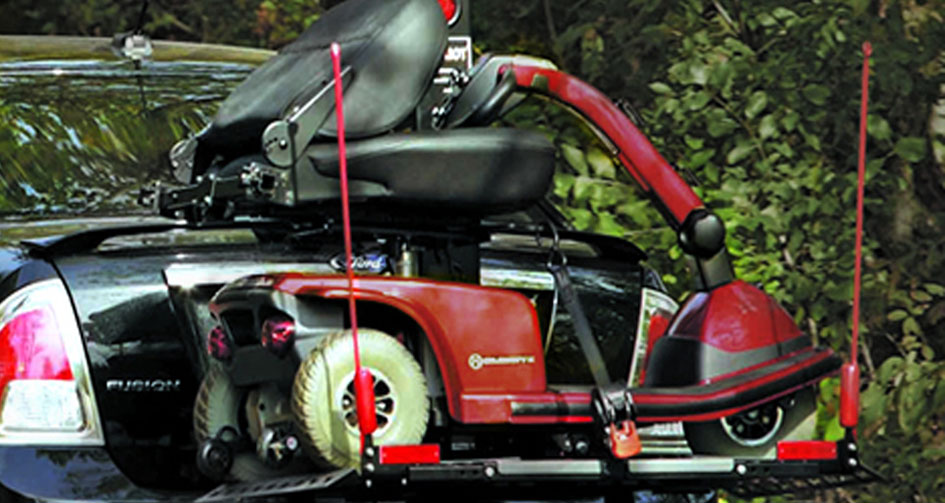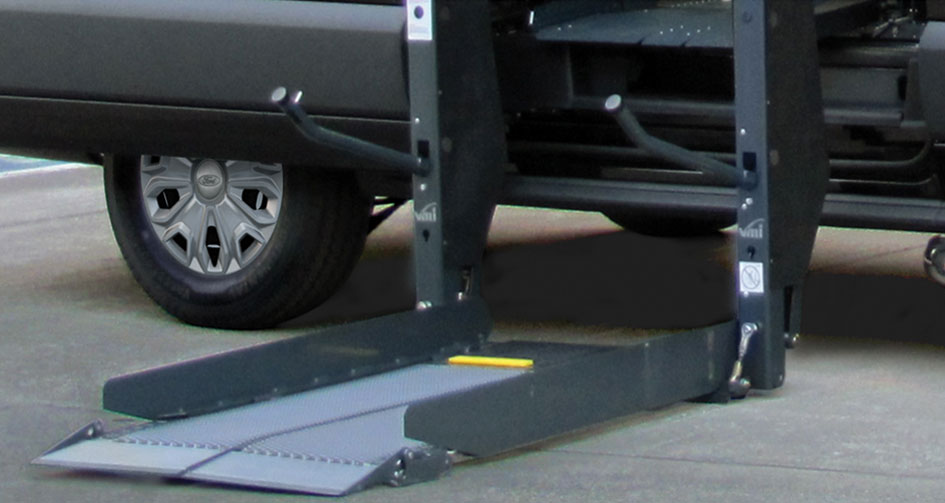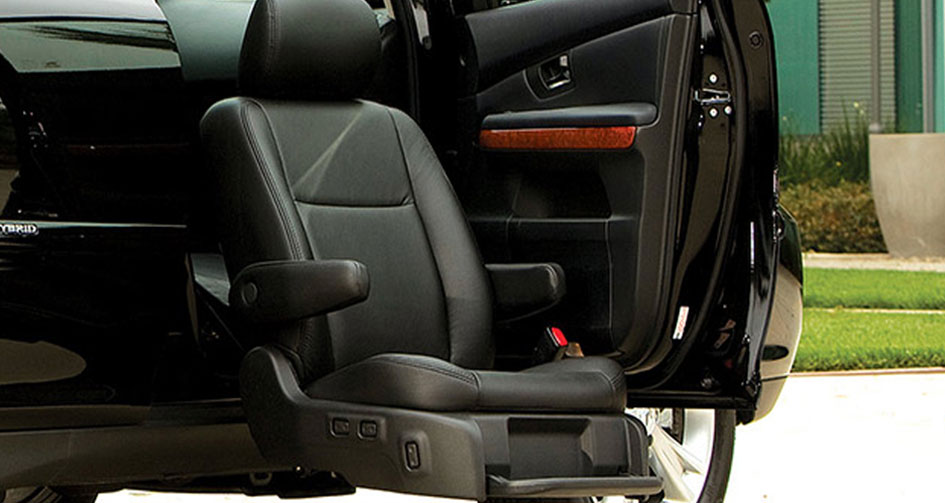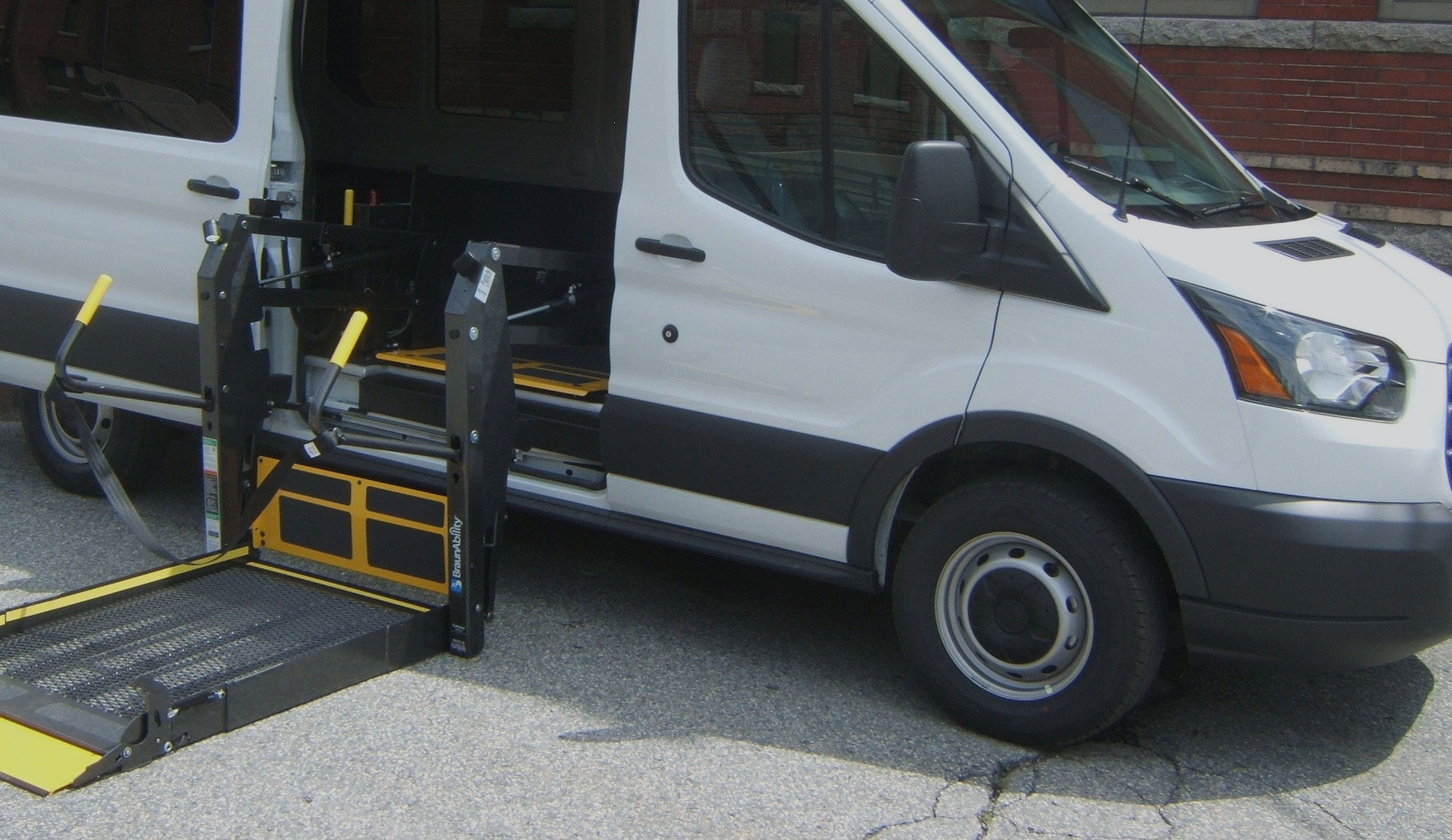 2019 FORD FIESTA
2019 FORD FIESTA
MOVE TO YOUR OWN BEAT.
QUESTIONS CALL:
1-800-952-2248
YOUR CAR IS HERE.
We believe that adding adaptive equipment to your vehicle shouldn't take anything away from your ability to express yourself. As you'll discover below, Ford offers a wide selection of adaptable coupes and sedans to meet almost every need, budget and personality. Review your options here, and then discuss them with your Ford Dealer.
APPROVED VEHICLES:
 2019 FORD FUSION
2019 FORD FUSION
 2020 FORD MUSTANG
2020 FORD MUSTANG
 2019 FORD TAURUS
2019 FORD TAURUS
 2020 LINCOLN MKZ
2020 LINCOLN MKZ
 2020 LINCOLN NAUTILUS
2020 LINCOLN NAUTILUS
ADAPTIVE EQUIPMENT
CARRIERS
Ford cars can be equipped with three types of carriers — each designed with your independence and convenience in mind:
- Bumper-Mounted Carrier: This smart design allows manual wheelchairs and scooters to be mounted on a bumper.
- Hitch-Mounted Carrier: This easy-to-use carrier tilts down when loading the wheelchair or scooter and then tilts up and locks into place.

Easy to load and unload, the carriers available for Ford vehicles are perfect for people on the go.
HAND CONTROLS
A number of technologically advanced electronic hand controls are available to enhance the operation of the Ford car you select, including:
- Push Pull Control: Slows the vehicle when pushed toward the floor and accelerates the vehicle when pulled toward the driver.
- Push Right Angle Pull Hand Control: Slows the vehicle when pushed toward the instrument panel and accelerates the vehicle when pulled downward at a right angle.
- Push Twist Control: Accelerates the vehicle when twisted and slows the vehicle when pushed toward the floor.
- Quad Hand Controls: Consists of an extra L-shaped bracket attached to the hand controls.
- Push/Rotary Control (mechanical): Slows the vehicle when pushed forward and accelerates the vehicle when rotated backward.

Electronic hand controls set your Ford in motion-with you in the driver's seat.
HOIST LIFTS
Ford cars can accommodate a choice of two innovatively engineered hoist lifts that can pick up wheelchairs or scooters, and make your life a lot easier.
- Car Top Lift: An electric motor-driven hoist operates by switches. A steel pin lowers to pick up a manual wheelchair, which folds as it rises.
- Trunk Lift: Places a scooter in the trunk-provided the scooter will fit.

Leave the heavy lifting to us-with a premium quality lift that's ideal for your Ford vehicle.
PARKING BRAKES
Choose from two ingenious devices that make it easier to activate the vehicle's parking brake:
- Electric Parking Brake: This is a motorized brake that can be set and released by a switch located within easy reach of the driver.
- Manual Parking Brake: This device features a handle attached to the parking brake that is long enough to operate by hand.

Simply brilliant! Activating your Ford's parking brake doesn't get easier than this.
POWER ASSIST SEATS
Get on board with the choice of two innovative systems that provide easy entrance into your Ford car:
- Rotating and Lift Seat: This system is ideal for vehicles such as trucks that are set higher off the ground. The seat rotates, comes out of the vehicle and lowers toward the ground-eliminating the difficulty normally associated with entering a vehicle with high ground clearance.
- Rotating Seat: Developed for vehicles that are lower to the ground, this system provides easy access to an automotive seat. The seat rotates out and over the doorsill, bridging the gap for a safe transfer onto the seat. Once you're on, the seat rotates back into the vehicle. A manual version of this device is also available.
- Under-Floor Lift Seat: This under-floor power transfer seat helps a person get in and out of a car without any modifications to the cab. The "Stow-Away™" discreetly hides under the car in a sealed, rugged drawer. A button is pressed and the drawer opens and stops to the correct transfer height. Once on the seat, the occupant presses the same button and the seat continues elevating to the cab.

Get in and out of your Ford with power-assisted convenience.
STEERING DEVICES
Engineered for those with limited arm, hand or wrist mobility, these steering devices can help you conveniently turn your Ford car in every direction:
- Amputee Ring: Designed for drivers with prostheses. The hook of the prosthesis fits into the ring and remains in place while driving.
- "Para" Spinner Knob: Consists of an adjustable base and a detachable knob that can be comfortably gripped with one hand.
- Palm Grip: Ideal for a person who has control of the wrist, but is limited in grip strength. The hand is always held flat to the steering wheel while driving.
- Quad Grip with Pin: A 3/8" steel shaft from a stiff leather cuff inserts into a spinner base, with a pin attached on a horizontal or a vertical position. This device requires a stable wrist.
- (Extension): Additional Steering Devices
- Quad Steering Cuff or Splint: Consists of a wrist cock-up splint with a post attached in a vertical or horizontal position. This is ideal for persons either lacking hand and wrist function or those unable to use the above steering devices.
- Spinner Cuff: Operates as the hand is held in place by a cuff and fastened with Velcro. A lockable short rod is placed in the base of the steering wheel near the palm of the hand to allow the person to steer.
- Tri-Post or Tri-Pin Spinner Knob: Helps to stabilize and secure the hand and wrist while driving.
- V-Grip or U-Grip: Hand controls keep the hand in an upright position and in place while driving. This is used primarily by people who have adequate wrist mobility.
- Deep Dish Steering Wheel: Used by persons who have limited reach and cannot safely turn the steering wheel due to its small size.
- Foot Steering Controls: For drivers who need to maneuver the vehicle entirely with their feet.
- Horizontal Steering: The steering column is easily adjusted by motorization for those drivers with limited reach.
- Steering Column Extension: The steering column is extended by 2-6 inches, allowing room to steer for individuals driving from their wheelchairs.
- Joystick: Very similar to the joystick on a wheelchair, this larger-scaled version allows the driver to maneuver the vehicle.
- Servo Controls: Unlike the other hand controls, these operate by an auxiliary motor, rather than the pressure of an individual's hand. This reduces the amount of strength needed by the driver.
- Reduced Effort Steering: The
following options assist drivers who have limited use of their
upper extremities:
- Low Effort Steering: Reduces the effort needed to steer a vehicle by approximately 40 percent.
- Zero Effort Steering: While standard factory power steering requires approximately 40 ounces of effort to operate, this type of device reduces the effort to 6-8 ounces (no effort)-a figure that will vary with vehicle models and tire size.

A wide range of steering devices can help you take firm control of your Ford vehicle.
ADAPTIVE EQUIPMENT GALLERY






NEED HELP WITH ADAPTIVE EQUIPMENT AND/OR
Vehicle
MODIFICATION? CALL 1-800-952-2248.
Exercise your rights under the California Consumer Privacy Act here.

